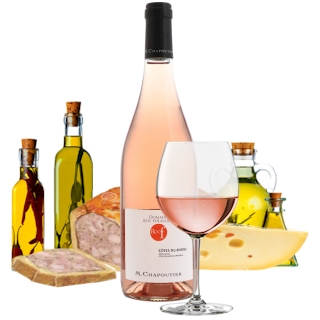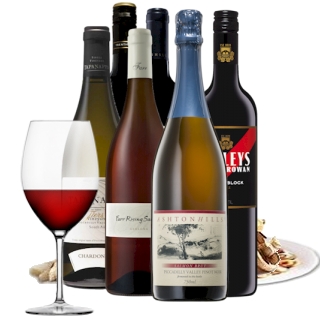Josef Chromy OAM escaped from war torn Czechoslovakia as a penniless 19 year old in 1950, he fled across minefields, evading soldiers and killer dogs, ultimately finding a new home in the lucky country. Chromy has been a long standing principal in the Tasmanian food and wine industry, he established Tasmania's leading brands, including Bay of Fires, Jansz, Heemskerk and Tamar Ridge. At 76 years young, he launched his namesake label, planting one of the apple isle's most stately vineyards and gazetting Tasmania's most compellingly stylish range of wines. Chromy's sensational vintages are as conspicuous for the uniqueness of their character as they are for their..
Tasty treats from the apple isle»
Stephen C. Pannell is one of Australia's most decorated winemakers, Jimmy Watson and twice Max Schubert Trophy winner, London International Winemaker of Year and Chairman National Wine Show. Pannell grew up amongst the illustrious plantings of his parents vineyards at Moss Wood, he established the profoundly artisanal Picardy of Pemberton and found time in between tours of duty at Wirra Wirra, Tintara and BRL Hardy, to do vintage in Burgundy, at the illustrious Mouton Rothschild and amongst the grand old vines of Barolo. Whatever the brand, regardless of vintage, S.C. Pannell's extraordinary wines are all distinct for their remarkable splendour, beguiling..
Peerless value by our nation's finest»
Dr Frederick Kiel would take the trek by paddle steamer from Melbourne every summer during the late 1800s to spend his summers at Sorrento. His children established a grazing station nearby, on a property acquired from the Baillieu family along Portsea Ocean Beach, ultimately planted to vineyards in 2000. These are the most extreme western longitudes of Mornington, the undulating paddocks and sweeping views of tempestuous Bass Strait are a magical place for growing Burgundesque styles of Chardonnay and Pinot Noir, well protected north facing parcels of propitious free draining limestone and calcareous sands. The windswept maritime vineyards of little Portsea..
Mornington's westernmost vineyards»
After hearing tall tales of the Victorian klondike, he jumped ship and made his way to the Castlemaine goldfields. Black Jack mined no fortune but he found his fame as the only American mariner to still be savoured alongside have claimed the eminent M.Chapoutier Trophy for Best Shiraz at the prestigious Le Concours des Vinson on no fewer than three occasions...
Found berth in the australian colonies during the goldrush of the 1850s»


























